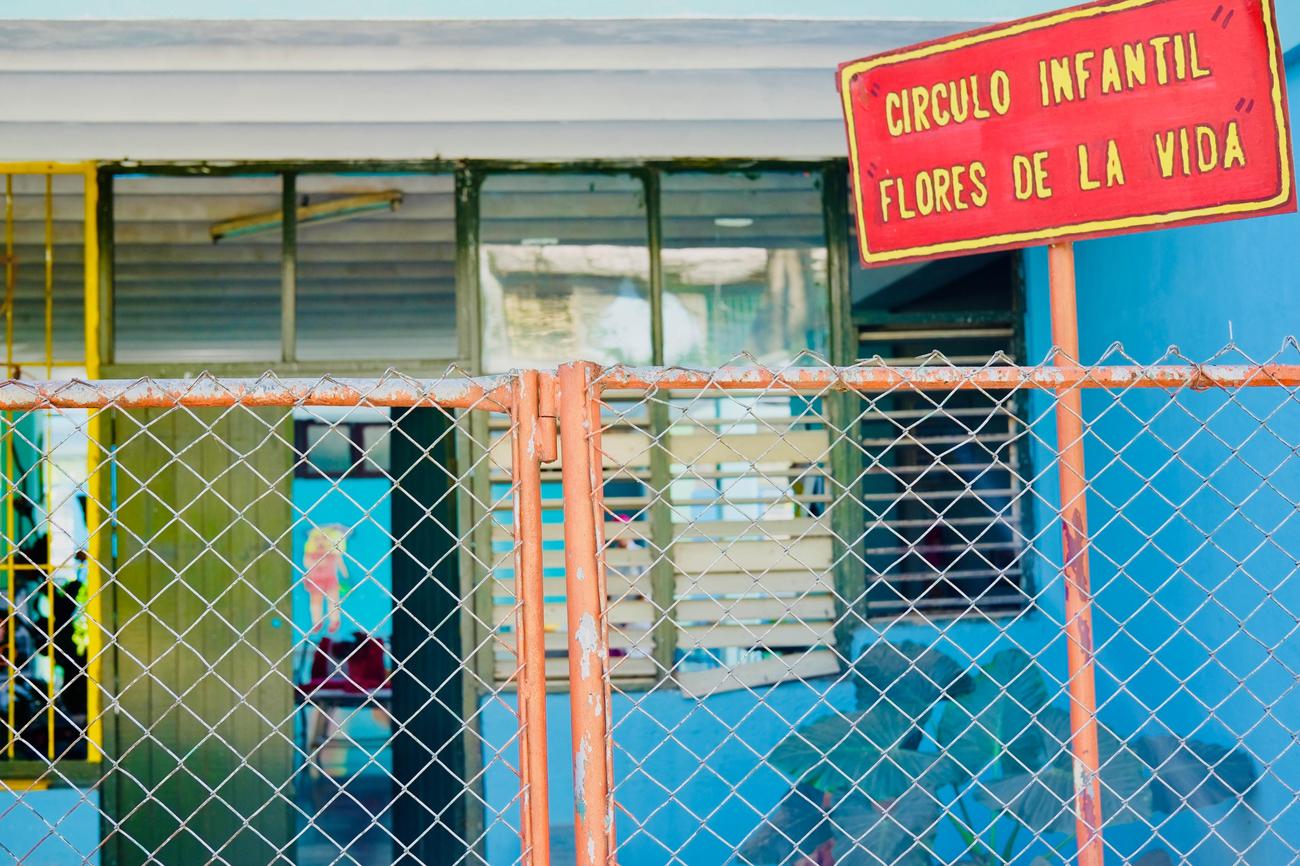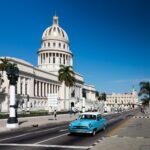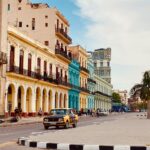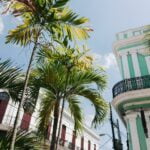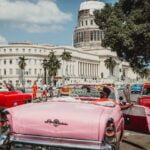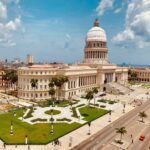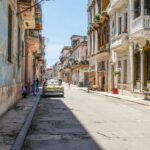Welcome to the captivating world of Cuba, a land steeped in history, culture, and untold tales waiting to be discovered. In this article, we will delve into the hidden gems of this vibrant nation, unearthing fascinating facts and shedding light on the captivating stories that often go unseen. From its rich Afro-Cuban heritage to its mouthwatering cuisine and breathtaking music scene, get ready to embark on a journey filled with intriguing details and unparalleled insights into the heart and soul of Cuba. So fasten your seatbelts and join me as we embark on an unforgettable adventure, unravelling the fascinating tapestry that is Cuba.
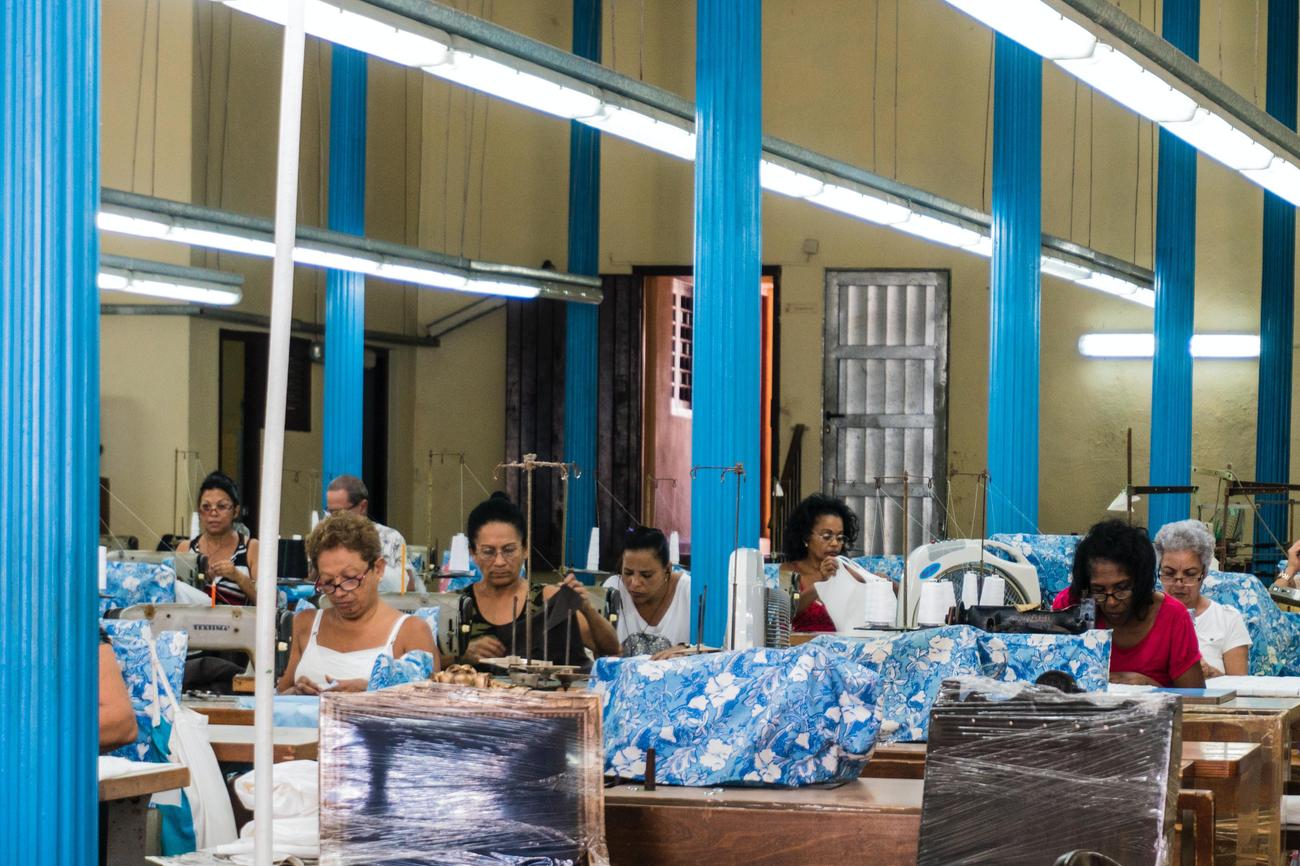
Interesting Cuban Facts
Did you know that Cuba is not only the largest island in the Caribbean, but also the largest country in the region? This vibrant nation is rich in history, culture, and fascinating facts that make it a truly unique destination. In this article, we’ll delve into some of the most captivating and lesser-known aspects of Cuban life, shedding light on its Afro-Cuban heritage, mouthwatering cuisine, vibrant music scene, and the lasting impact of historical events on its society.
One intriguing fact about Cuba is its impressive literacy rate of 99.8%, making it one of the highest in the world. The Cuban government has placed great emphasis on education, ensuring that its citizens have access to quality schooling. This commitment to education has empowered the Cuban people and contributed to their overall development.
In 2015, Cuba achieved a remarkable milestone by becoming the first country to eradicate mother-to-child transmission of HIV and syphilis. This groundbreaking achievement showcased Cuba’s advanced healthcare system and its dedication to public health. It serves as an inspiring example to the rest of the world.
Cuba is also home to the bee hummingbird, the world’s smallest bird. This tiny creature, measuring only two inches long, can be found fluttering among the island’s vibrant flora. With its iridescent colors and delicate wings, this feathered wonder adds to Cuba’s natural beauty.
Now, let’s delve into the culinary delights of Cuba. Have you ever heard of “ropa vieja”? No, it’s not about old clothes, but rather Cuba’s national dish. This delicious meal consists of tender shredded beef cooked with onions, peppers, and spices. Its name, which translates to “old clothes,” comes from the way the meat resembles shredded fabric. Don’t let the name deter you – ropa vieja is a true delicacy!
Here’s an interesting tidbit about Cuban history. From 1969 to 1998, Cuba actually banned Christmas celebrations. This decision was influenced by the country’s communist regime, which aimed to de-emphasize religious practices. However, in 1998, the ban was lifted and Christmas was once again celebrated throughout the island. This change brought joy and festive cheer back into the lives of the Cuban people.
Moving on to New Year’s Eve traditions, imagine watching giant rag dolls being set on fire in the streets of Cuba. This unique tradition, known as “Quema del Muñeco,” symbolizes leaving behind the troubles and worries of the past year. The burning of these dolls acts as a cathartic release, paving the way for new beginnings and promising futures.
Now, let’s explore the symbolism behind Cuba’s flag. The blue stripes represent the different regions of the country, while the white stripe symbolizes purity and the red triangle represents the blood shed during the fight for independence. The flag serves as a powerful symbol of freedom and unity for the Cuban people.
Cuba’s diverse landscapes are another fascinating aspect of the country. From the lush mountains of the Sierra Maestra to the pristine wetlands of the Zapata Peninsula, and from the picturesque tobacco fields of Viñales to the enchanting forests of Topes de Collantes, Cuba offers a variety of breathtaking natural wonders to explore.
When it comes to Cuban culture, two activities stand out: playing dominoes and hitch-hiking. Dominoes are a beloved pastime for many Cubans, with locals gathering in parks or on street corners to engage in friendly competitions. Hitch-hiking, on the other hand, is a common mode of transportation in Cuba, reflecting both the resourcefulness of the people and the strong sense of community prevalent throughout the island.
In conclusion, Cuba is a treasure trove of fascinating facts and untold tales. Its Afro-Cuban heritage, unique cuisine, captivating music scene, and the impact of historical events on its society make it a captivating destination. As we’ve discovered, Cuba’s impressive literacy rate, significant achievements in healthcare, and vibrant traditions contribute to its distinct identity. So, whether you’re planning a visit to this captivating country or simply seeking to expand your knowledge, exploring the interesting Cuban facts will surely enrich your understanding of this vibrant nation.
_”Cuba’s diversity is not limited to its landscapes, but expands to its rich culture, history, and traditions that weave together a unique tapestry of human experience.”
Cuba, a vibrant and captivating Caribbean island, is filled with rich history, stunning landscapes, and intriguing culture. If you’re curious about the secret gems and fascinating facts that make Cuba truly unique, look no further. Discover some intresting facts about Cuba and get ready to be amazed. Click here to unlock the hidden wonders of this captivating destination: intresting facts about cuba
Interesting Cuban Facts
Cuba is a country of captivating cultural landmarks that are just waiting to be explored. From the vibrant streets of Havana to the historic sites of Trinidad, there is so much to discover. One of the most enchanting aspects of Cuba is its hidden gems, which often go unnoticed by tourists. If you’re looking to dive deeper into the country’s rich history and culture, make sure to check out our curated list of the hidden gems of Cuba. These lesser-known corners of Cuba will take you off the beaten path and introduce you to a side of the country that few get to see. So what are you waiting for? Embark on a journey that will leave you in awe by clicking the link to explore the captivating cultural landmarks of Cuba captivating cultural landmarks. And for those seeking a more off-the-beaten-path adventure, don’t miss out on the hidden gems of Cuba hidden gems of Cuba or the lesser-known corners of Cuba lesser-known corners of Cuba. Start planning your unforgettable Cuban experience today!
Interesting Facts About Cuba: Exploring the Spanish-Speaking Island
[youtube v=”pnHeEnk9nrk”]
Cuba: A Cocodrilo-Like Caribbean Gem
Cuba, known as the Republica de Cuba in Spanish, is an enchanting island located between the Caribbean Sea and the North Atlantic Ocean. Situated just 90 miles south of Key West, Florida, it stands as the largest island and country in the Caribbean. With its rich history and vibrant culture, Cuba offers a fascinating experience for visitors of all ages.
From Conquest to Independence
After its discovery by Christopher Columbus in 1492, Spain swiftly conquered Cuba, ruling over the island for centuries. However, in the late 1800s, Cuba finally gained its independence and became a fully-fledged republic in 1902. The flag of Cuba features five horizontal stripes in white and blue, with a red triangle and a symbolizing star at its center, representing the spirit of liberty and independence.
A Land of Contrasts
Cuba, with its population of over 11 million people, stands out as the most densely populated island in the Caribbean. The official currency is the Cuban peso, and Havana, also known as La Habana, serves as the bustling capital and largest city of Cuba. Acting as a major port and commercial hub, Havana pulsates with an atmosphere of vitality and energy.
Ropa Vieja: A Taste of Cuba’s Legends
Cuba’s vibrant culinary scene brings forth its national dish, Ropa Vieja, meaning “old clothing.” According to legend, a poor old man shredded clothes and cooked them to feed his family. Miraculously, the old clothes transformed into a delectable stew of shredded beef, onions, peppers, and tomato sauce. Today, Ropa Vieja has become a beloved dish not only in Cuba but across the region.
“Ropa Vieja, a flavorful concoction of shredded beef, peppers, and onions, continues to enchant taste buds, weaving tales of Cuba’s rich culinary traditions.”
Unique Characteristics of Cuba
As we delve deeper into the fascinating world of Cuba, let’s explore some intriguing facts that make this island truly remarkable.
Vintage American Cars and the Crocodile-Shaped Island
One eye-catching aspect of Cuba is its unique collection of vintage American cars from the 1950s. Since Fidel Castro banned the import of foreign cars in 1959, these classic beauties have remained in use, turning the streets of Cuba into a living museum of automobile history.
“In Cuba, time seems to stand still as vintage American cars roam the streets, evoking a sense of nostalgia and an indelible connection to the past.”
Cuba’s shape itself is reminiscent of a crocodile, earning the island the affectionate nickname “cocodrilo” among locals.
Dominoes and the Universal Language of Friendship
Cubans have a deep love for playing dominoes, transforming it into a popular pastime and a way to connect with friends. Gathering around tables on the streets, Cubans engage in lively games for hours on end, using this time to catch up on current events and share stories.
“The clattering of dominoes and joyful laughter fill the air, as friends forge unbreakable bonds over a game that transcends language barriers.”
The Melodic Legacy of Cuban Music
Cuba’s rich and distinctive musical heritage weaves together elements from Spanish, African, and Caribbean influences. Notably, captivating dances like the Roomba, Mambo, and Cha-Cha-Cha all originated in Cuba, solidifying its prominence in the world of vibrant rhythms and melodies.
“With its captivating beats and infectious melodies, Cuban music radiates an irresistible energy, offering a sonic journey through the heart and soul of this astounding island.”
Baseball: Cuba’s National Passion
Baseball holds an unrivaled place in the hearts of the Cuban people, making it the most popular sport on the island. With a remarkable 11 stadiums dotting the Cuban landscape, it serves as an affordable national pastime and a source of great national pride.
“In Cuba, baseball is more than just a sport; it’s a cultural phenomenon that unites the nation, symbolizing the resilient spirit and unwavering determination of the Cuban people.”
A Haven for Flamingos and Hummingbirds
Cuba, a true paradise for nature enthusiasts, is home to awe-inspiring wildlife. Its diverse landscapes, including mountains, wetlands, tobacco fields, and forests, provide a haven for an array of creatures. Notably, Cuba boasts the largest flamingo colonies in the Western Hemisphere, sheltering approximately 70,000 Caribbean flamingos. Additionally, it is the dwelling place of the world’s smallest bird, the Cuban Bee Hummingbird, known locally as the Suncito.
“Cuba’s natural wonders captivate the soul, offering solace to magnificent creatures such as the vibrant pink flamingos and the astonishingly petite Cuban Bee Hummingbirds.”
Conclusion
Cuba, with its fascinating history, vibrant culture, and breathtaking natural beauty, stands as a captivating destination for anyone seeking adventure and wonder. From its vintage cars to its love for dominoes, this island nation is a treasure trove of unique experiences.
“Embark on a journey through time and immerse yourself in the allure of Cuba, a land that embraces the past while embracing a bright future, beckoning travelers with its warm hospitality and incomparable charm.”
FAQ
Question 1
What is the literacy rate in Cuba?
Answer 1
Cuba has a literacy rate of 99.8%, one of the highest in the world.
Question 2
What achievement did Cuba make in 2015 in terms of healthcare?
Answer 2
In 2015, Cuba eradicated mother-to-child transmission of HIV and syphilis, a world first.
Question 3
What is the national dish of Cuba called?
Answer 3
Cuba’s national dish is called ropa vieja, which means old clothes.
Question 4
What was the status of Christmas celebrations in Cuba for 30 years?
Answer 4
Cuba banned Christmas for 30 years until 1998.
Question 5
What are some traditional customs in Cuba?
Answer 5
In Cuba, burning rag dolls on New Year’s Eve is a tradition. Additionally, playing dominoes and hitch-hiking are part of Cuban culture.
- Senior at What Age: Benefits & Eligibility Guide - March 29, 2025
- Unlocking Senior Benefits: How Old is a Senior? Your Complete Guide - March 29, 2025
- Master Russian Politeness:A Guide to Saying Please - March 29, 2025
